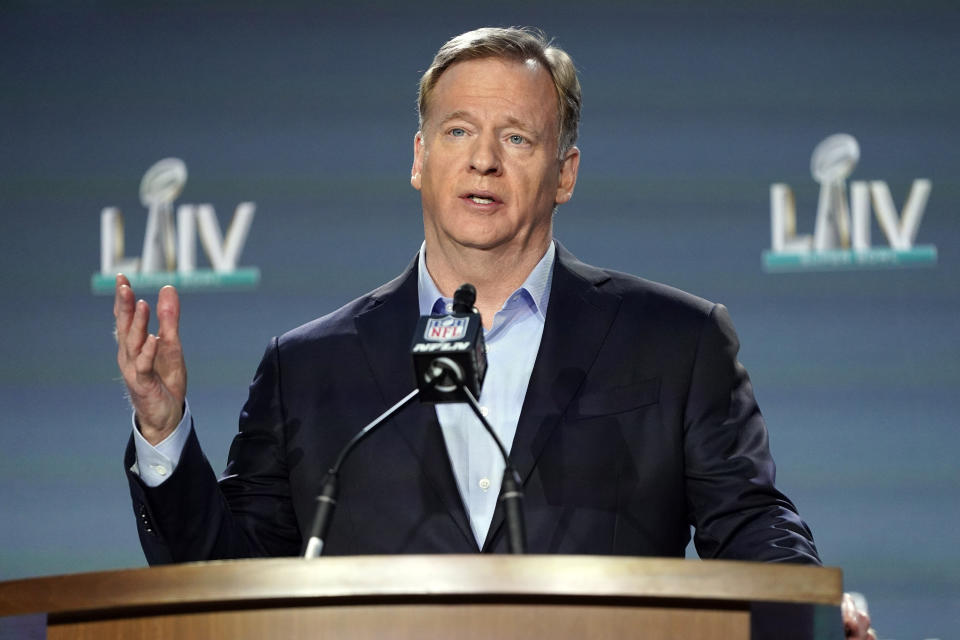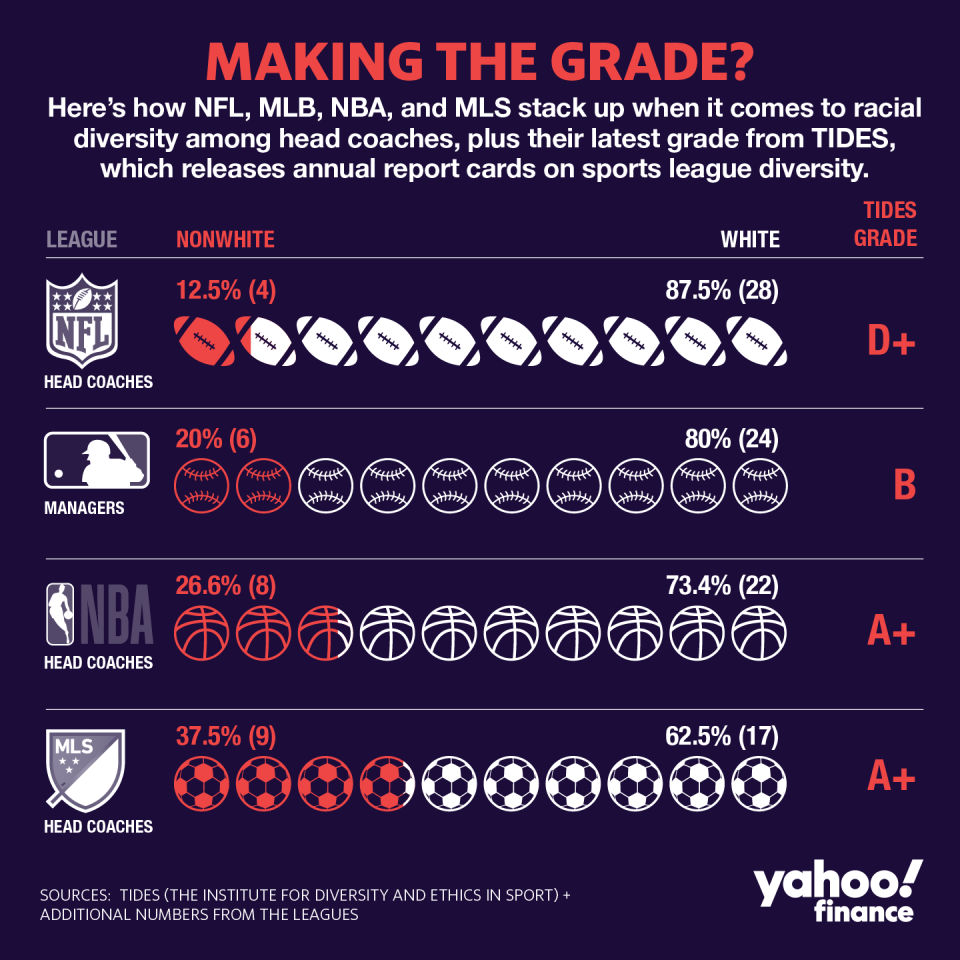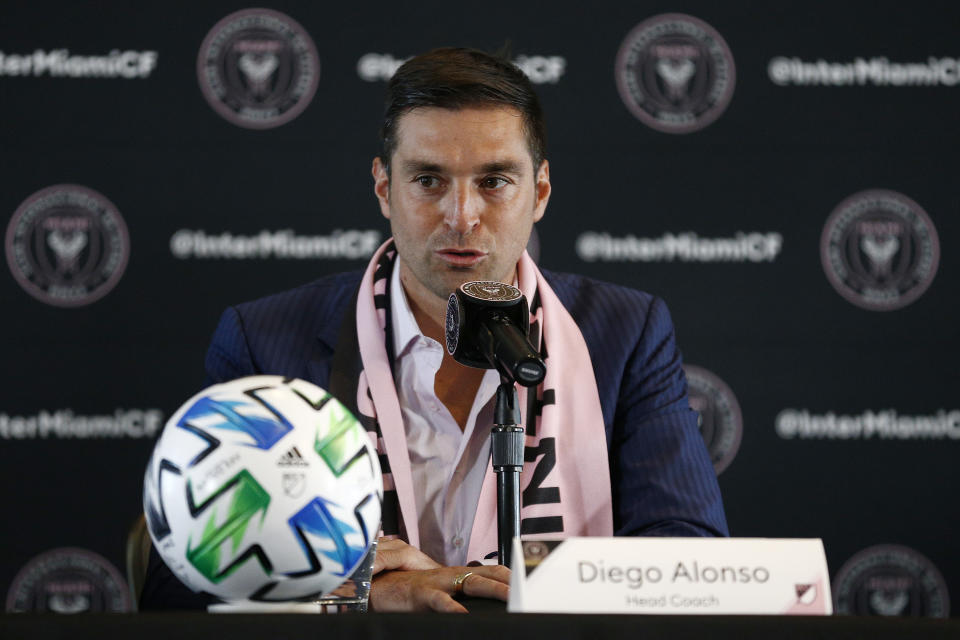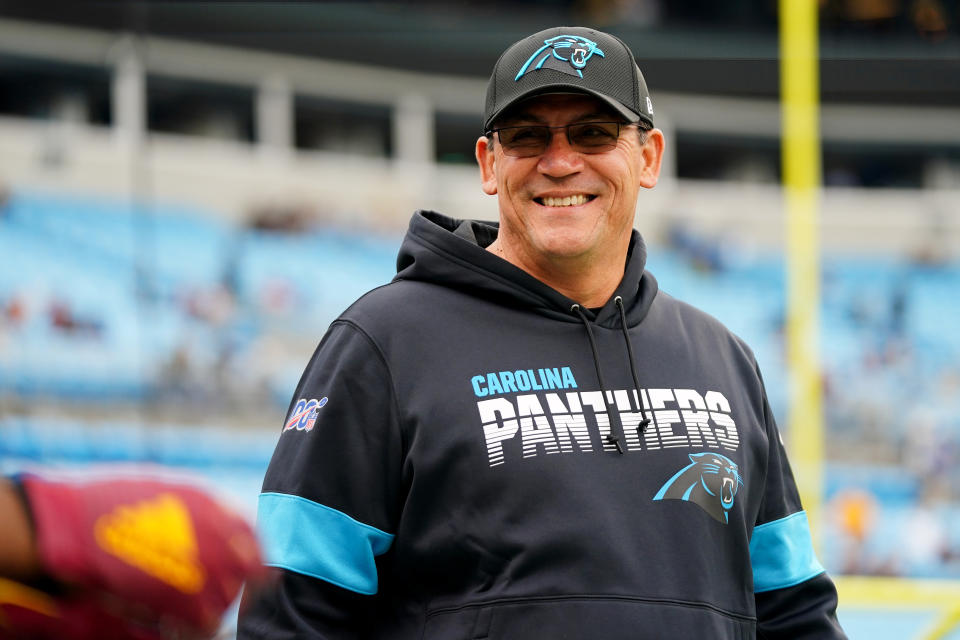How the major US sports leagues stack up on coach diversity hiring
In 2003, the NFL adopted the “Rooney Rule,” mandating that all teams interview at least one minority candidate for open head coach or senior football operations jobs. The rule didn’t require they actually hire the candidate, just that they always interview one. It was an effort to stoke diversity among NFL coaches.
Seventeen years later, the NFL has the same number of black head coaches as it had in 2003: three. There is also one Hispanic head coach. That’s four nonwhite head coaches out of 32, or 12.5%.
That number has put the NFL and the Rooney Rule back under the microscope, and it gives the NFL a D+ head coach grade from TIDES (The Institute for Diversity and Ethics in Sport), which issues diversity report cards for the major sports leagues, commonly called “Lapchick reports” after TIDES director Dr. Richard Lapchick, a professor at the University of Central Florida. The Lapchick report is generally considered the leading barometer of how each league is doing on diversity. (The reports also score leagues on gender diversity, but for this story, we focused on racial diversity.)
TIDES produces annual reports on the NBA, MLB, and MLS as well, and those three leagues score better than the NFL on almost every metric. (TIDES does not produce a report on the NHL.)
On Jan. 29 in Miami, NFL Commissioner Roger Goodell was pressed about coaching diversity.
“It’s clear we are not where we want to be on this level,” he said. “We have a lot of work that's gone into not only the Rooney Rule, but our policies overall. It's clear we need to change and do something different. There's no reason to expect that we're going to have a different outcome next year without those kinds of changes.” Goodell said the NFL has scheduled meetings to discuss how to better stoke diversity hiring.

The NFL is doing better with front office jobs and assistant coaches than it is with head coaches. The TIDES report finds 19.4% people of color in NFL team "senior administration positions,” up from 17.3% the year prior, translating to a solid B in that area. For assistant coaches, it finds 199 nonwhite hires out of 592 total assistant coaches, giving it an A+ grade.
Still, the NFL has just two nonwhite general managers (GMs), giving it an F grade for GMs.
“There should be serious concern in the consistent decrease in representation of people of color within general manager roles on NFL teams,” Lapchick said in his 2019 NFL report. “Although there was improvement in 2019 in senior administrators for both women and people of color, having representation at positions of influence is vital for improving racial and gender hiring practices within the league.”
The NFL earned an overall B for its racial hiring practices thanks to its diversity in league office jobs, team senior administration, and assistant coaches, offsetting its abysmal grades in the head coach and GM categories.
The NFL declined to comment for this story beyond directing Yahoo Finance to the TIDES report.
While the NFL takes the most heat for its diversity failures, it isn’t the only league that has struggled in this crucial area. So, how do the other big U.S. sports leagues stack up?

Major League Baseball has six nonwhite managers (the baseball equivalent of a head coach) of the 30 teams, a percentage of 20.7%, slightly higher from last April, when Lapchick’s 2019 MLB report gave it a B for managers. The league is doing better on bench coaches, with 11 nonwhite bench coaches out of 30, or 36.6%.
But like the NFL, MLB is extremely white at the GM level. The league has just two nonwhite GMs, or 6.6%. Ken Williams of the White Sox and Farhan Zaidi of the Giants do not have the GM title, but do have final say over baseball operations; if you include them, the number is four. TIDES gives MLB a C- grade for GM/President of Baseball Ops diversity.
In 2017, MLB Players Association executive director Tony Clark declared, “We are failing” to make front offices more diverse. MLB in 2016 launched a “Diversity Pipeline Program” to identify and develop minority and female candidates for baseball operations jobs. The league also launched in 2018 a “Diversity Fellowship” to recruit talented minority college students for internships with the league or its clubs.
An MLB spokesperson tells Yahoo Finance the league is “committed to reflecting the cultural diversity of our players and fans throughout our game. We are pleased to have six managers of color, representing the most since 2011.”
NBA, MLS are leaders in racial hiring
Perhaps football and baseball ought to look toward basketball and soccer as guides.
The NBA is doing the best of the “big three” leagues (NFL, MLB, NBA) on head coaches: It has eight nonwhite head coaches out of 30, or 26.6%, for a TIDES grade of A+ in its 2019 NBA report.
This gets closer to matching the diversity of the NBA’s players. Lapchick finds that the percentage of white players in the NBA has fallen to its lowest point since 2010: 81.9% of NBA players are nonwhite. For comparison, 70.1% of NFL players are nonwhite (58.1% are black), while 41% of MLB players are nonwhite (but only 8% are black).
On assistant coaches, the NBA has 81 nonwhite assistant coaches out of 180 (45%), according to the NBA Coaches Association (NBCA), though the 180 number does not include non-NBCA members, like some player development coaches or other personnel who may do jobs that are similar to “assistant coach” roles.
“Diversity and inclusion are essential to the future success of our game,” the NBA’s chief diversity officer Oris Stuart tells Yahoo Finance, “and we’re committed to creating and sustaining a culture of inclusion at every level of our organization.”

Pro soccer also gets impressively high marks from TIDES. Nine of 26 MLS head coaches are nonwhite, or 37.5%, the highest percentage of any league. 46.4% of MLS assistant coaches are nonwhite, up from 40.3% in 2018, and 61.7% of its players are nonwhite (33.4% are Latino).
In its 2019 MLS report, TIDES awards MLS an A+ for its racial hiring in all these metrics: league office; head coaches; assistant coaches; GMs; and players. “The league’s success starts with its stellar racial hiring performance within its league office,” Lapchick says. “The teams are doing an exemplary job hiring coaches from international backgrounds… a big part of the league’s success in diverse hiring stems from soccer’s international nature.”
MLS declined to comment for this story beyond providing Yahoo Finance with its diversity numbers.
TIDES does not produce a report on hockey, a notoriously homogeneous sport. The NHL did share with Yahoo Finance that it has one nonwhite head coach out of 31 teams (3.2%), and six nonwhite assistant coaches out of 72 (8.3%). Both percentages are the lowest of the five leagues.
At the NHL Board of Governors gathering in December, NHL Commissioner Gary Bettman, speaking about two recent incidents involving alleged racial slurs among NHL officials, announced that NHL personnel would soon be required to attend mandatory racism counseling, and said, “Inclusion and diversity are not simply buzzwords, they are foundational principles for the NHL.”
Kim Davis, the league’s executive VP of social impact, adds in a comment to Yahoo Finance, “To achieve true and sustainable diversity, particularly at elite levels of play or in leadership positions, we need to focus on our game’s culture and the multitude of elements that comprise inclusion. This work cuts across everything we do and into various stakeholder groups, including coaches and hockey operations personnel… The sustainability of this movement will come as we swell the pipeline and fuel the interest of more people of color and more women and girls in this game through authentic engagement.”
‘It’s not clear’ if the Rooney Rule works
Perhaps the NFL takes the brunt of the scrutiny not just because it is the biggest, most powerful sports cash cow in America ($15 billion in revenue last year), but because it specifically adopted a rule to achieve diversity — a rule that hasn’t demonstrably worked. (After the NFL, MLB is second with $10.7 billion in revenue, then the NBA with $9 billion, NHL with $5 billion, MLS with nearly $1 billion.)
The 2003 Rooney rule is “probably the best diversity initiative we’ve come up with thus far in terms of trying to close the gap,” says Christopher Rider, a professor at the University of Michigan’s Ross School of Business who co-authored a 2016 study on racial diversity in NFL promotions. “But it’s not clear if it does work.”
Rider’s study highlights the fact that business leaders remain predominantly white despite increasing U.S. workforce diversity and efforts to increase minority representation. Rider and his co-authors assert that bias in the performance-based reward system is “generating racial disparity in leadership by suppressing the rate at which minorities, relative to equally-performing whites, are promoted to positions considered prerequisite for organizational leadership."
The study analyzes the careers of more than 1,200 NFL coaches from 1985 to 2012 to support this claim. Rider’s primary concern is with the implementation of the Rooney Rule — by NFL teams and also by American companies, which have tried to adopt it.
“Our study shows that regardless of whether or not you believe the Rooney Rule works, there is a persistent racial disparity in the promotion rate from lower levels to the coordinator level, and the Rooney Rule has not applied there,” Rider says. “The NFL has said that they’re now informally applying it to the coordinator level. But there’s no transparency on what’s actually being done there. The second reason it’s of concern is that there’s really no way to tell if the Rooney Rule has produced any progress that would not have happened otherwise.”
Rider does not think it’s fair to place all the blame on the teams, though. “We don’t know why the promotion rate of minority coaches is less than that of white coaches,” he says. “What we can say is that it is most certainly lower.”

Possible solutions
It’s no secret that as in the NFL, there is a clear diversity problem in the C-suites of corporate America. There are currently only four black CEOs in the Fortune 500: Kenneth Frazier of Merck; Roger Ferguson of TIAA; Jide Zeitlin of Tapestry; and Marvin Ellison of Lowes.
Rider believes it might be even harder to diversify the Fortune 500 than the NFL. “My working hypothesis is that the more subjective it is to measure performance, the more latitude there is for bias in the process,” he says. In the NFL, coaching performance is typically measured by one objective (if tough) metric: winning. “Now, take that into corporate America,” Rider says. “How do we measure someone’s performance in a similarly objective fashion? We don’t have win-loss records or passing yards. We have only subjective performance evaluations.”
His idea: private companies should serve as the testing ground for the Rooney Rule.
“I want to find an organization that wants to do this in a randomized, controlled trial fashion in which we randomly decide which jobs are going to be subject to a Rooney Rule process,” Rider says. “If we do that and we do that for a large enough sample, we will know after enough hiring events whether or not the Rooney Rule is associated with increasing diversity or not.”
While some of the big leagues are getting good marks for diversity, none should rest on their laurels. Study after study has established that racial diversity at the highest levels makes businesses stronger.
In January, after Ron Rivera was the only minority candidate hired (by the Washington Redskins) out of five open NFL head coaching jobs, the Fritz Pollard Alliance, an advocacy group for racial diversity in the NFL, called it a “blemish on the National Football League.” The NFL, as the most visible of America’s sports titans, will continue to take heat until it does better in this area.
—
Daniel Roberts is an editor-at-large at Yahoo Finance and closely covers sports business. Follow him on Twitter at @readDanwrite.
Reggie Wade is a writer at Yahoo Finance and covers sneakers and sports apparel. Follow him on Twitter at @ReggieWade.
Read more:
The ‘prevailing challenge’ that is keeping C-suites from being diverse
NFL TV ratings rose 5% this regular season—but are still far from 2015 peak
How NFL sponsor Bud Light took advantage of an NFL beer fine
Nike sells out of all Kobe Bryant kicks and merchandise
In the streaming wars, live sports could set NBC's Peacock apart